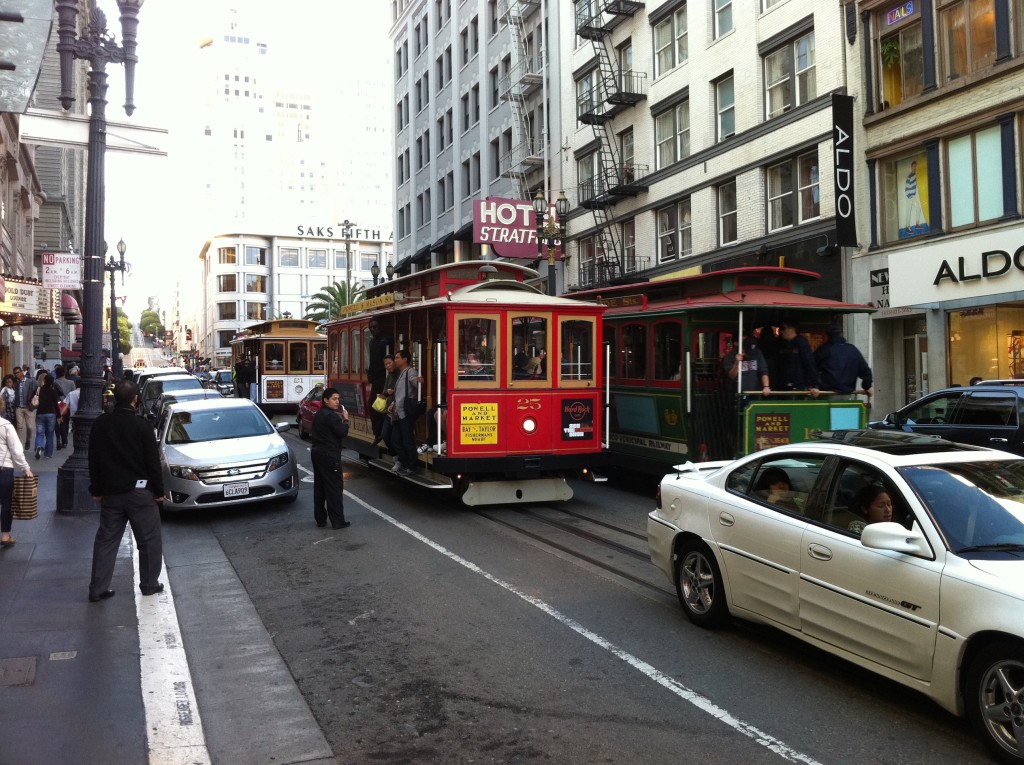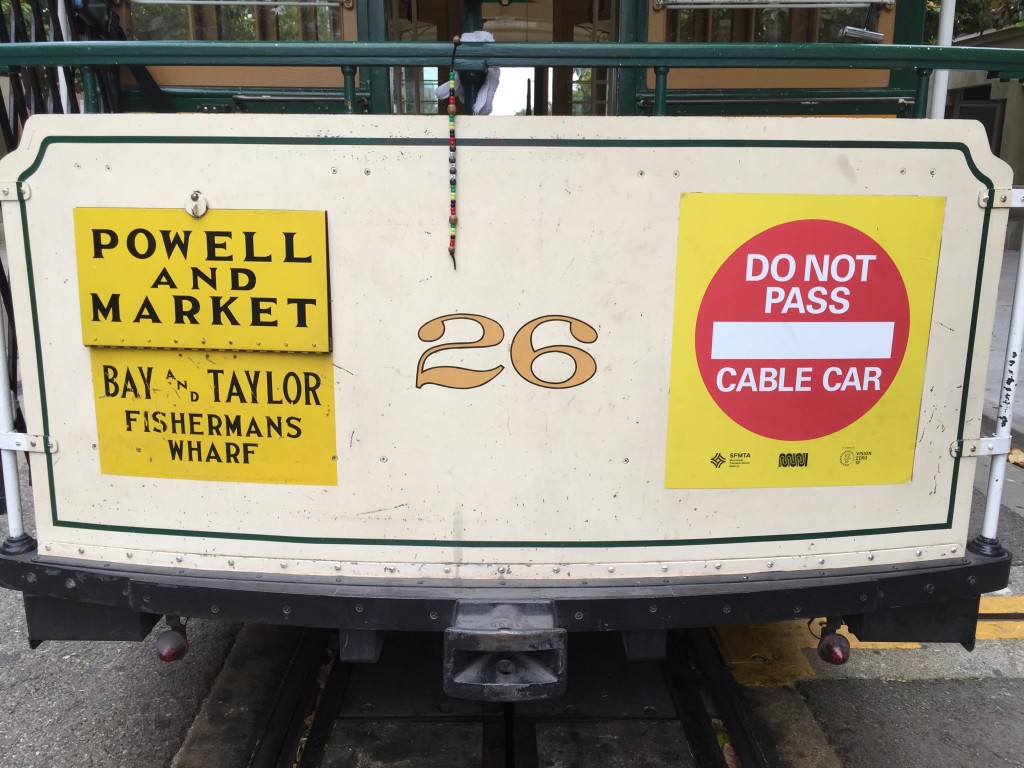 With the strong support of Market Street Railway, Muni’s parent SFMTA is proposing an 18-month test that would remove everything but cable cars (and pedestrians) from lower Powell Street, specifically the two blocks between Ellis and Geary.
With the strong support of Market Street Railway, Muni’s parent SFMTA is proposing an 18-month test that would remove everything but cable cars (and pedestrians) from lower Powell Street, specifically the two blocks between Ellis and Geary.
Here’s a good Hoodline story with details.
SFMTA recommends starting the test in November, but the Union Square Business Improvement District, led by Karin Flood, is concerned that the busiest shopping season is a bad time to implement changes, especially when seasonal shoppers will also be encountering stringent new automobile restrictions on Market Street, plus Central Subway construction.
Market Street Railway has been recommending the closure of lower Powell to automobiles to SFMTA for well over a year, after observing that gridlocked automobiles on Powell have greatly delayed cable car service. Sometimes it takes cable cars leaving the turntable at Market Street ten minutes just to make the three blocks to Geary. We’re very sensitive to business’ concerns about timing and about maintaining access in special circumstances, and recognize that a few compromises will be needed.
But something simply must be done. Even more troubling than the delays is the safety factor. Cable cars operate by gripping a constantly moving cable under the street like a giant pair of pliers. Each time the gripman (or gripwoman) clamps onto the cable, it causes friction and wear, both to the grip dies on the cable car and, more importantly, to the cable itself. If one of the hundreds of strands that make up the cable breaks, it can eventually form a bulge in the cable that can catch the grip from behind. When this happens, the cable car is pulled forward on its own, at great risk of hitting pedestrians or other vehicles.
Since Ed Cobean joined SFMTA from Caltrain last year to head Cable Car operations, he has instituted rigorous measurement systems. The data has allowed SFMTA to understand the pinch points (pardon the expression) in the cable car maintenance and operating environments. Cobean soon learned that the cable under Powell Street was being replaced far more often than in the past, and identified the inching up the first two blocks of Powell as a key contributor.
The first block of Powell, between Market and Ellis, was closed to automobiles when Hallidie Plaza was completed in 1973. (Before that, amazingly, cable car conductors and gripmen had to turn the car on the turntable while fending off passing automobiles!)
In the decades since, developments such as the Westfield Center (incorporating the historic Emporium facade) on Market Street have stretched the boundaries of Union Square, and fostered greatly increased pedestrian traffic through the area, especially on lower Powell. Temporary “parklets,” sponsored by Audi, were built along the two blocks of Powell between Ellis and Geary to provide a little spillover space for pedestrians, but the crowds continue to grow.
Meanwhile, automobile traffic all over the city has increased, while the cable cars are tethered to technology more than a century old; technology that is truly historic and not really possible to update in a way that can cope with bumper to bumper autos on the tracks.
The same increasing automobile traffic has clearly tried the patience of some drivers, leading to stupid and dangerous moves that increase accidents and hurt people, particularly bicyclists and pedestrians. That’s what has spurred the city’s “Vision Zero” program to greatly reduce accidents of all kinds.
In two recent separate incidents, motorists seriously injured cable car conductors who had stepped off their cars to help passengers safely disembark. This led SFMTA to give up valuable advertising space on the back of its Powell Street fleet to post signs reminding motorists that it’s illegal to pass a cable car (a law that has been in effect for at least a half century). The cable car safety program, which includes other measures, is official part of Vision Zero now.
Market Street Railway supports and applauds any action SFMTA takes to give cable car workers a clear track ahead, especially in the most congested parts of lower Powell Street. These cars are the very symbol of our city. The safety of the people who operate them, and ride on them, cannot be compromised.

I’ve always thought that part of Powell would benefit from reduced car traffic, if only because you have so many tourists and whatnots walking there, driving down Powell is kinda useless.
Plus, I captured on camera a while back a classic case of a car driver, armed with cell phone and middle finger, defiantly plowing ahead
https://www.flickr.com/photos/gdewar/albums/72157604505600179
Not to mention the Parklet platforms have a 3-4 foot fence on the street side. People are constantly getting trapped in traffic when someone in a car, Uber, or a taxi let’s them out next to the Parklet.
People also tell Uber to pick them up at Powell addresses next to the Parklet and when the car arrives they realize they have to scramble over the fence or run around the end and out into the street all while their Uber just sits there blocking traffic. I’ve seen it happen several times and I’m only down there for 10-15 minutes 3x a week.